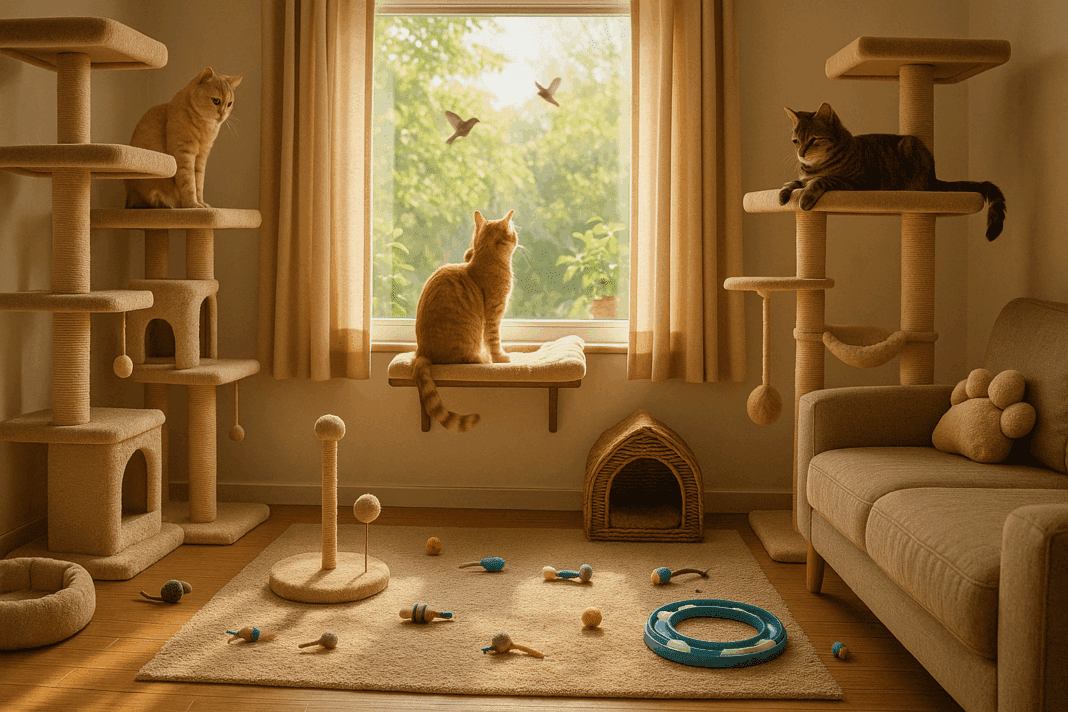Indoor cats can often feel trapped without proper stimulation. Dr. Elsey’s insights into creating enriched, safe indoor environments help maintain a cat’s mental health while reducing anxiety and destructive behavior.
Although domesticated, cats’ core instincts remain strong. These behaviors can lead to challenges when they live indoors without sufficient stimulation. Enriching your cat’s environment to cater to its natural instincts is crucial for maintaining good health and preventing behavioral problems. Without proper mental and physical engagement, cats may develop boredom, anxiety, and even destructive tendencies.
Understanding cat behavior and recognizing your pet’s needs for exploration, hunting, and climbing will help you build a more enriched and fulfilling indoor environment. In this article, we’ll explore the essential elements of creating a cat-friendly home, from vertical spaces and interactive play to hygiene and stress management.
The Importance of Enriching Indoor Environments for Cats
Cats have complex behavioral needs that should be met to maintain their well-being. Dr. Carlo Siracusa, a veterinary behaviorist at the University of Pennsylvania School of Veterinary Medicine, explains that while indoor cats are protected from the dangers of the outside world, they often lack the environmental stimulation necessary to satisfy their natural instincts. Without proper enrichment, indoor cats may express stress or frustration through undesirable behaviors such as excessive grooming, scratching furniture, or house soiling. Cat behavior issues often stem from boredom or insufficient engagement with their environment.
Providing an enriched environment ensures your cat can express its natural cat behaviors, such as climbing, exploring, hunting, and playing. The Feline Veterinary Medical Association (FVMA) notes that environmental enrichment can help reduce stress, prevent obesity, and support overall mental and physical health.
Key Elements of a Cat-Friendly Indoor Environment
To create a stimulating and healthy indoor environment, it’s important to consider the physical, mental, and emotional needs of your cat. Here are the key components of an enriched indoor space:
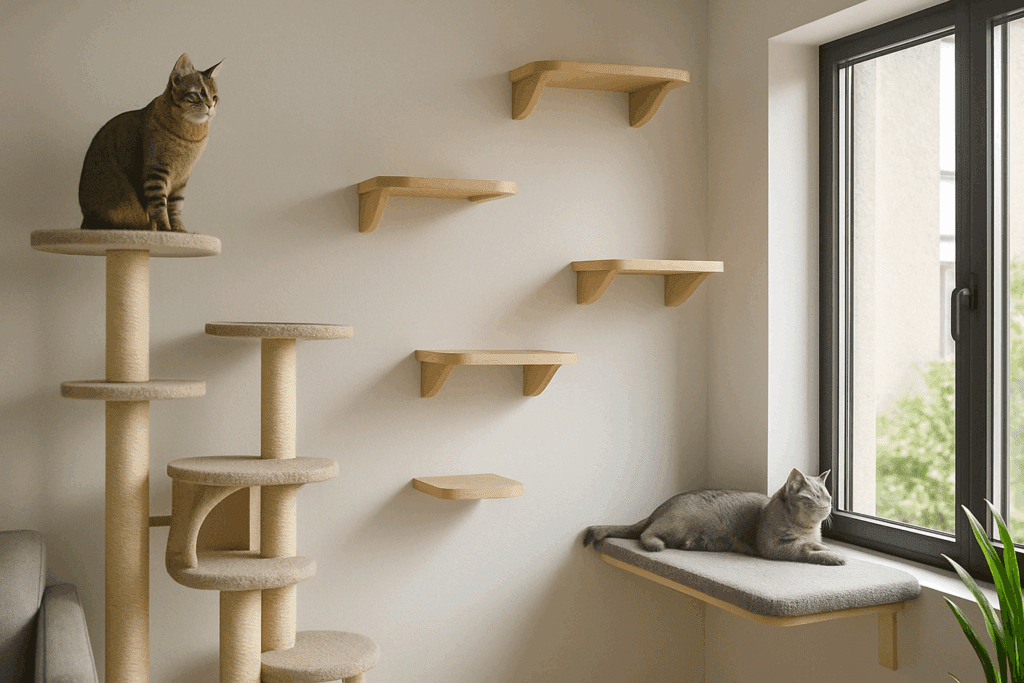
1. Vertical Spaces and Climbing Opportunities
Cats are natural climbers, and in the wild, they often perch in high places to survey their surroundings and feel secure. Providing vertical spaces, such as cat trees, shelves, or window perches, is one of the simplest ways to enrich your cat’s environment. Dr. Sandra Mitchell, a feline veterinarian, points out that vertical spaces give cats the opportunity to engage in natural behaviors, such as climbing and jumping. “This helps satisfy their predatory instincts, provides exercise, and gives them a place to retreat when they want to be alone,” says Mitchell.
Cat trees, especially those with multiple levels, scratching posts, and hiding spots, are excellent for providing both physical exercise and mental stimulation. For multi-cat households, vertical spaces also help reduce tension by allowing cats to establish their own territories at different heights, minimizing conflict and stress.
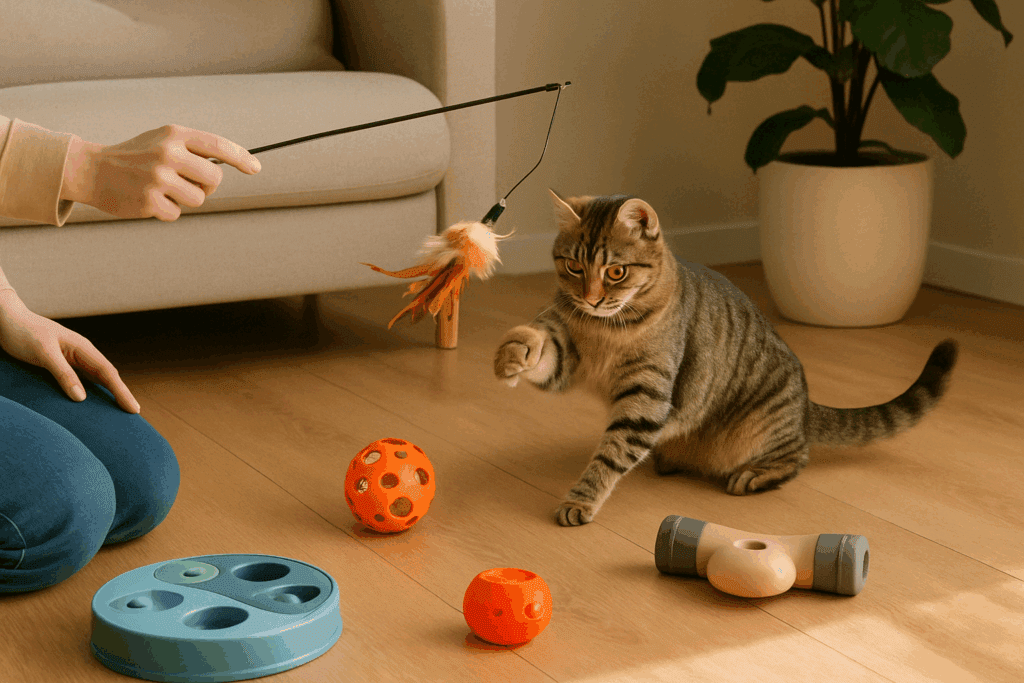
2. Interactive Play and Mental Stimulation
Hunting is a critical part of cat behavior. While indoor cats no longer hunt for food, they retain their predatory instincts, which must be addressed through interactive play. Engaging your cat in regular play sessions helps replicate the hunt, chase, and capture cycle, satisfying these natural urges while keeping them physically active.
Feline behaviorist Jackson Galaxy emphasizes that interactive play sessions, particularly those that involve toys that mimic prey, are crucial for keeping cats engaged. “Using a wand toy or a laser pointer, you can simulate the hunt, chase, and capture cycle that’s instinctual for cats,” says Galaxy.
Puzzle feeders and treat-dispensing toys can also provide mental stimulation by encouraging your cat to work for its food. Dr. Elsey’s explains that such products cater to a cat’s natural instincts, promoting safe and healthy mental engagement. For instance, using a puzzle feeder can make mealtime more challenging and mentally stimulating, helping to combat boredom.
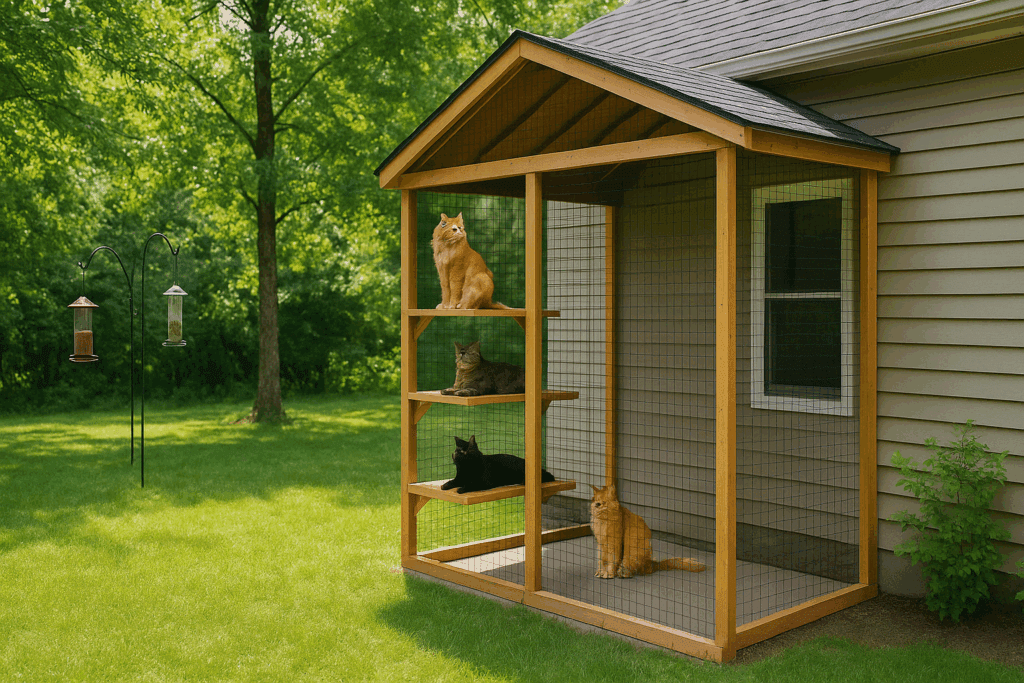
3. Safe Outdoor Access or Window Views
While many experts recommend keeping cats indoors for their safety, allowing them controlled outdoor access or a view of the outdoors can greatly enhance their well-being. A safe outdoor enclosure, such as a “catio,” allows cats to experience the sights, sounds, and smells of the outside world without the risks associated with free-roaming.
If outdoor access isn’t feasible, window perches can provide hours of entertainment, especially if you position them near bird feeders or plants that attract wildlife. Dr. Bruce Elsey, founder of Dr. Elsey’s, advocates for creating “cat-safe environments that allow your feline to feel connected to nature.” This connection to nature—whether it’s watching birds or feeling the warmth of the sun—supports a cat’s mental health by offering a sense of exploration and variety within the safety of the home.
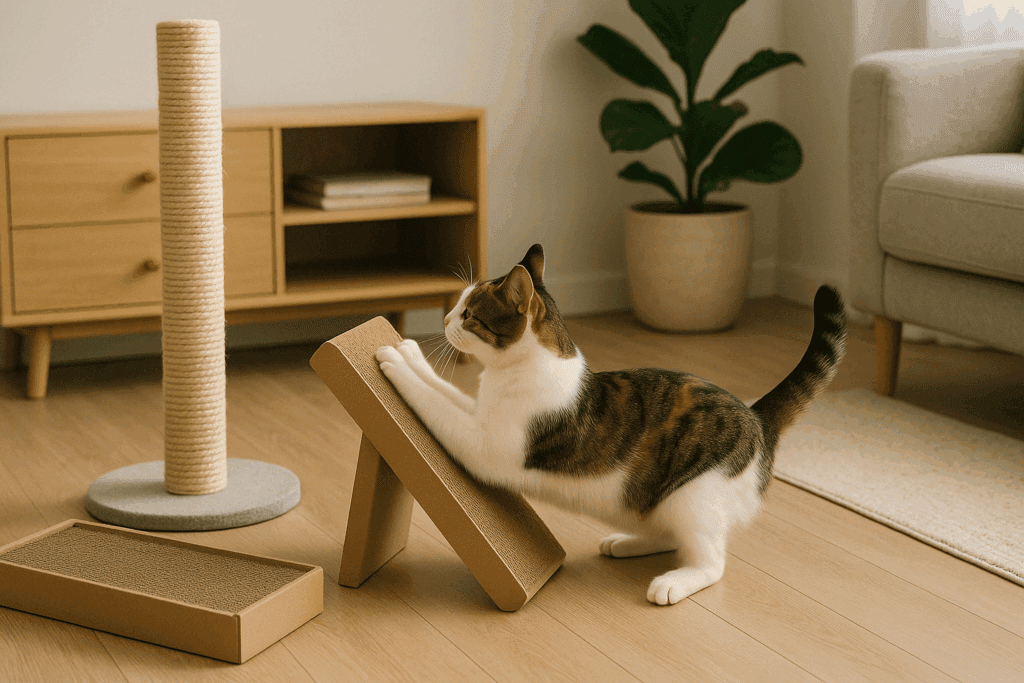
4. Scratching Posts and Enrichment for Claws
Scratching is a natural and essential aspect of cat behavior, serving several purposes, including marking territory, stretching, and maintaining healthy claws. Inadequate outlets for scratching can lead to destructive behavior, such as scratching furniture. Providing multiple scratching posts or pads in your home can prevent damage to your belongings while fulfilling your cat’s instinctive need to scratch.
Experts recommend a variety of scratching surfaces—vertical posts, horizontal pads, and different materials like sisal or cardboard—to find what your cat prefers. Dr. Elsey’s also emphasizes that supporting natural cat behaviors such as scratching reduces anxiety and prevents unwanted damage in the home. High-quality scratching posts can help reduce stress, particularly in multi-cat households, by allowing each cat to mark their own space.
5. Multiple Litter Boxes, Litter Options, and Hygiene
A well-maintained litter box setup is not only vital for your cat’s hygiene but also plays a critical role in reducing stress and preventing behavioral issues. Dr. Elsey’s offers a variety of litter solutions that promote a clean, odor-controlled environment, ensuring your cat feels comfortable using its box regularly.
According to the Cornell Feline Health Center, a common cause of litter box avoidance is a lack of cleanliness or poor box location. It’s recommended to have one litter box per cat, plus an additional one, and to clean the boxes daily. Dr. Elsey’s Ultra Litter is formulated to clump effectively and manage odor, reducing the chances of litter box aversion.
By providing multiple litter boxes in quiet, low-traffic areas and maintaining cleanliness, you can ensure your cat’s litter habits remain healthy. In multi-cat households, offering separate boxes can also prevent territorial disputes and reduce anxiety, making your home a more peaceful environment for all felines.
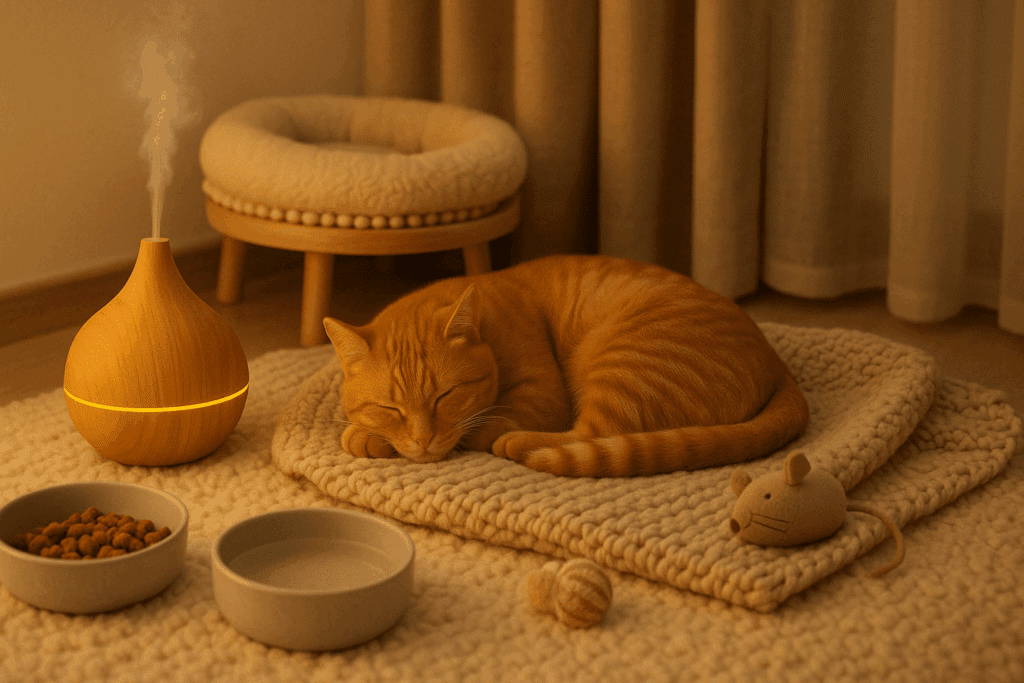
Managing Stress and Anxiety in Indoor Cats
Environmental enrichment is not only about physical stimulation but also about managing the emotional and psychological needs of your cat. Cats are creatures of routine and can be easily stressed by changes in their environment, whether it’s new furniture, a new pet, or a move to a different home. Understanding how to manage stress is essential for maintaining healthy cat behavior indoors.
Pheromone diffusers, such as Feliway, can help reduce anxiety by mimicking the calming facial pheromones that cats naturally produce. Additionally, establishing routines for feeding, playtime, and quiet time can provide a sense of stability and security for your cat, reducing stress-related behaviors like over-grooming or aggression.
Dr. Elsey’s philosophy of creating enriched, safe indoor environments ties into this idea of reducing stress. By offering a variety of safe, stimulating, and comfortable spaces for your cat to engage in natural behaviors, you can help maintain your cat’s mental health and prevent destructive habits that often stem from boredom or anxiety.
Addressing the Social Needs of Cats
Though cats are often considered solitary animals, they can be quite social, especially with other pets or humans. However, not all cats are equally social, and some may need more space and independence than others.
For multi-cat households, it’s important to provide enough resources—litter boxes, food and water bowls, and resting areas—so that each cat has its own space. The International Association of Animal Behavior Consultants (IAABC) recommends managing social interactions carefully, especially when introducing new cats into the home, to prevent stress and aggression.
Providing hiding spots or enclosed spaces, such as cat tunnels or boxes, can give your cat a place to retreat when it needs privacy. This is especially important in households with children or other pets, where a cat might feel overwhelmed at times.
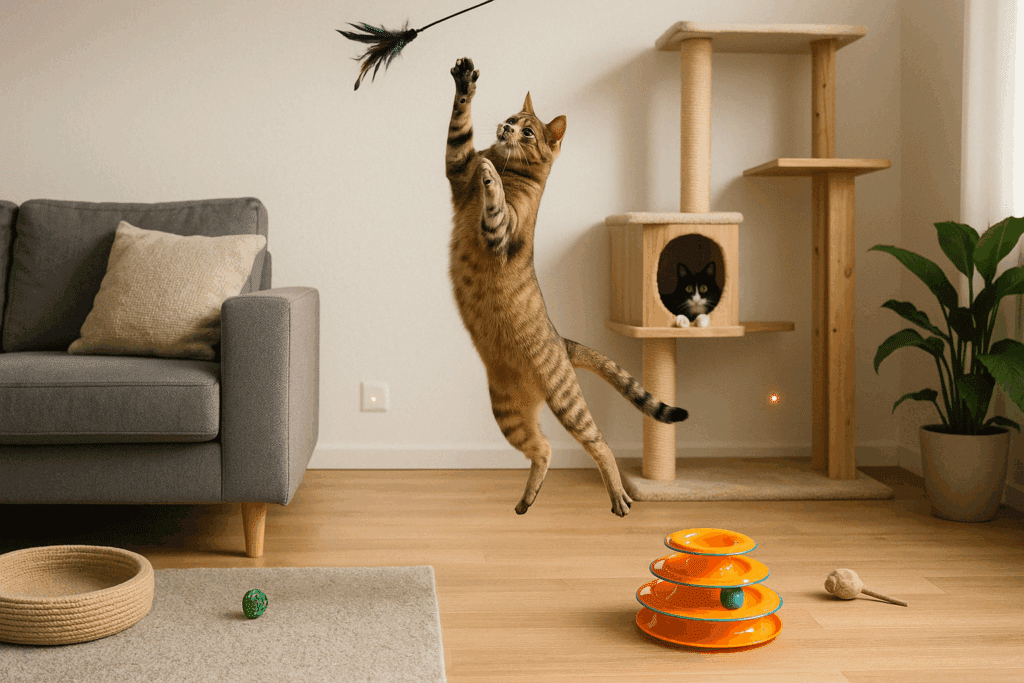
Enrichment and Health: Keeping Indoor Cats Fit
Indoor cats are prone to weight gain due to a lack of physical activity. The American Veterinary Medical Association (AVMA) warns that obesity in cats can lead to a host of health problems, including diabetes, arthritis, and heart disease. Providing enrichment that encourages movement and exercise is essential to keeping your cat healthy.
Incorporating regular play sessions with wand toys, laser pointers, or interactive toys can help burn off excess energy and prevent weight gain. In addition, rotating your cat’s toys or introducing new ones periodically can keep its interest and prevent boredom.
Dr. Elsey’s: Promoting Natural Instincts in Indoor Cats
Dr. Elsey’s has long been a leader in creating products that promote feline health and well-being. The brand’s philosophy is centered around understanding and supporting a cat’s natural instincts, even within the confines of an indoor environment. By offering innovative litter products and enrichment solutions, Dr. Elsey’s helps cat owners provide the best possible living conditions for their pets.
Whether through its high-quality litters designed to reduce stress and promote healthy litter habits, or its commitment to creating environments that cater to a cat’s mental health, Dr. Elsey’s is dedicated to enriching the lives of indoor cats. For more information on Dr. Elsey’s products and how they can enhance your cat’s environment, visit www.drelseys.com.
Understanding Your Cat
Enriching your indoor environment for your cat is essential for maintaining its physical and mental health. By providing vertical spaces, interactive play, safe outdoor access, multiple scratching options, and a clean litter box setup, you can ensure your cat remains happy and engaged. Managing stress and creating a sense of routine further supports your cat’s emotional well-being, reducing the risk of anxiety-related behaviors. Understanding and catering to cats’ natural behaviors is key to creating a happy, healthy environment in which they can thrive.
Was this article helpful? Don’t let it stop with you. Share it right now with someone who needs to see it—whether it’s a friend, a colleague, or your whole network. And if staying ahead on this topic matters to you, subscribe to this publication for the most up-to-date information. You’ll get the latest insights delivered straight to you—no searching, no missing out.
Further Reading:
- Environmental Enrichment for Indoor Cats – Compend Contin Educ Vet.
- A systematic review of social and environmental factors and their implications for indoor cat welfare – Applied Animal Behaviour Science
- Dealing With Stress in Cats: What Is New About the Olfactory Strategy? – Frontiers in Veterinary Science


